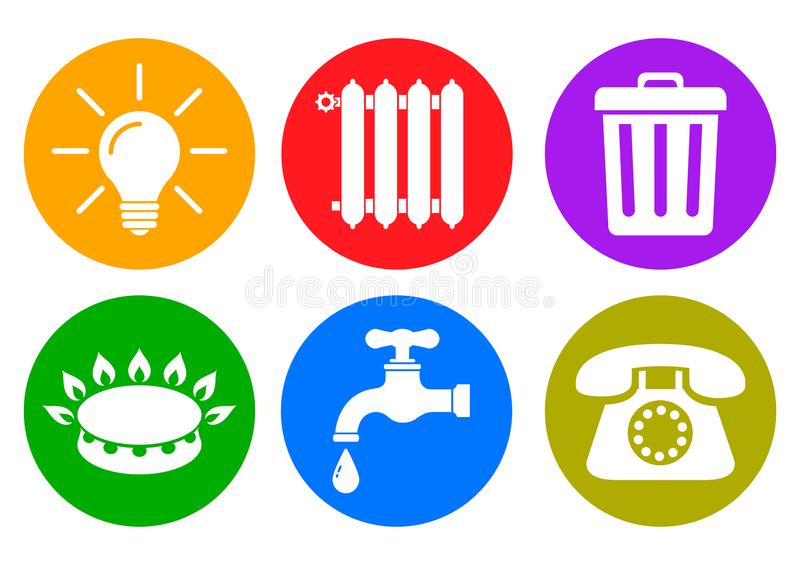Contents:


A credit note is sent to inform about the credit made in the account of the buyer along with the reasons mentioned in it. From the buyer, he prepares and sends a credit note as an intimation to the buyer showing that the money for the related goods is being returned in the form of a credit note. A debit note is sent to inform about the debit made in the account of the seller along with the reasons mentioned in it. ‘Creditor‘ account is debited by the buyer to record a purchase return. Earlier, when reporting a credit note or a debit note, the original invoice number was mandatorily required to be quoted on the GSTN portal in Form GSTR-1 and Form GSTR-6. When the credit note is received from the supplier, the same is marked off against the debit note in the debit note book, thus enabling a system of efficient tracking and balancing.

Thus the purchase return journal entries are recorded in the company’s books of accounts when the goods purchased either on cash or credit are returned to the supplier of such goods. In some cases, sellers may send debit notes which look like an invoice, however, they are different as debit notes are not required to be paid immediately. A debit note acts as a buyer’s formal request for a credit note from the seller. The document serves as evidence to support a purchase return in the accounting books of a buyer.
How a Debit Note Works
On the basis of the Debit Note, purchase return book is updated. Conversely, sales return book is updated with the help of a Credit Note. The sales return book is updated on the basis of the credit note. Depending on the purpose of the debit note, it can provide information regarding a forthcoming invoice or serve as a reminder for payments that are due.
It is often used in b2b (business-to-business transactions). 6.1 He shall declare the details of such credit notes in the return for the month during which such credit note has been issued. The tax liability shall be adjusted in the return subject to conditions of section 34 of the CGST Act. 5.1 According to sec 34 of the CGST Act, where the goods supplied are returned by the recipient, the registered person who has supplied such goods may issue a credit note for supplies made in a financial year. Thus, the supplier is required to issue a credit note for Rs 5900/-(Rs 5000+).
In addition, it is used for various other purposes like a rectification of a wrong invoice, change in order quantity, change in taxes, etc. Harold Averkamp has worked as a university accounting instructor, accountant, and consultant for more than 25 years. He is the sole author of all the materials on AccountingCoach.com.
Join Taxguru’s Network for Latest updates on Income Tax, GST, Company Law, Corporate Laws and other related subjects.
Since one copy of the debit note is given to the supplier, the supplier may use it as a reference point while issuing the credit note. Debit Note is a document issued to a party stating that you are debiting their Account in your Books of Accounts for the stated reason or vise versa. It is commonly used in case of Purchase Returns, Escalation/De-escalation in price, any other expenses incurred by you on behalf of the party etc. Save taxes with ClearTax by investing in tax saving mutual funds online. Our experts suggest the best funds and you can get high returns by investing directly or through SIP. Download ClearTax App to file returns from your mobile phone.
Finally press enter to accept the screen and again press Enter to save the voucher. Tax Ledger applicable for this particular transaction would be CGSTandSGST even this would have already been created under Duties and Taxes with required rate of GST of 5% in this case. Real-time updates – ClearOne is subject to regular monitoring by a constructive team of tax experts and some of the best software technologists, thus ensuring timely updates and structural improvements. Now that the invoice is complete in all respects, you have the option to ‘Send Note’ to your customer, generate an e-invoice, download or print it.
Barclays launches free cashback without purchase service across … – Barclays
Barclays launches free cashback without purchase service across ….
Posted: Mon, 10 Oct 2022 07:00:00 GMT [source]
A credit note also doesn’t affect only the sales return account. A credit note can also be issued for erroneously overcharging. Credit NoteA credit note is a financial document that sellers provide to buyers as a token of confirmation against registered returns. It acknowledges the cancellation and lets the sellers make a credit entry to the buyers’ account for the required amount. On the other hand, credit notes are issued in exchange of debit notes. Millions of purchase and sale transactions occur in day to day life, and so does the returns are made by many customers, when the find the products are not upto their requirement.
A debit note is a written declaration of a purchase return issued by the buyer and sent to the seller. In addition, the document mentions the reasons for returning. On the contrary, an invoice is an itemized bill issued by a seller and sent to a buyer—upon completion of a sales transaction. A debit memo is a document that a buyer issues to the seller in case of a purchase return. Alternatively, sellers send a memo to buyers when they want to rectify an understated invoice.
Purchase and Sales Return Under GST
Many debit notes may be submitted as informative postcards that act as a reminder of the debt accrued by the buyer. It can be useful in situations where the vendor is uncertain if an initial invoice has been obtained or updated. The postcard will also provide information about how to settle the debt, such as specific contact details. When the buyer undercharges the seller’s account, then he issues debit note. A purchase return occurs when a buyer returns merchandise that it had purchased from a supplier. Since the return of purchased merchandise is time consuming and costly, under the periodic inventory system there will be an account Purchases Returns.
A debit note means purchase return note, also known as a debit memo, is generally used in business-to-business transactions. Such transactions often involve an extension of credit, meaning a vendor sends a shipment of goods to a company before the buyer’s cost is paid. The note tells the buyer that the seller has debited their account. Although real goods are changing hands, real money is not transferred until an actual invoice is issued. Debits and credits are instead logged in an accounting system to track shipped inventories and payments owed.
Alternatively, debits and credits are entered into an accounting system to keep track of shipped inventories and payment due. A buyer might also issue a debit note because the seller failed to the goods within an agreed-upon time or date or by or on a specified date. The name, address, GSTIN, and contact details of the supplier and recipient have to be mentioned in the debit note, along with the date of the invoice and due date for payment.
Debit note impacts account receivables and cause the same to lower down whereas a credit note impacts account payables and causes the same to lower down. A debit note and credit note are issued when the goods are returned by a customer to the supplier or seller of those goods. A debit note is issued to the supplier or the seller of the goods while a credit note is issued to the customer or the buyer of the goods. A debit note reflects a positive amount whereas a credit note reflects a negative amount. A debit note lowers account receivables whereas a credit note lowers account payables.
Did You Overpay And Get A Negative Credit Card Balance? Here Are 5 Things To Note – Outlook India
Did You Overpay And Get A Negative Credit Card Balance? Here Are 5 Things To Note.
Posted: Mon, 17 Oct 2022 07:00:00 GMT [source]
A debit note sent by the buyer to the seller of goods or services, related to a purchase invoice, indicates an adjustment to the original invoiced amount. It is effectively a credit for the buyer and a debit for the seller. A debit note is a commercial document that usually contains information with regard to any adjustments to be made to a particular invoice amount. As per Section 36 of the CGST Act, the records pertaining to debit notes must be retained from the due date of furnishing of annual return for that particular year until the expiry of 72 months. Some companies use debit notes to bill for items that are not their primary business. For example, if a company sublets some of its warehouse space, it might issue a debit note for the rent.
Goods returned by unregistered buyers
Jackson Enterprises makes a purchase on credit from Obi Ltd. for 10,000 whistles at the rate of Rs.15 per whistle. The seller issues an invoice for the order, given to Jackson Enterprises upon delivery. However, Obi Ltd. realises that the rate per whistle is Rs.14 in the invoice submitted to Jackson Enterprises, thus understating the invoice by Rs.10,000.
A debit note is exchanged for a credit note whereas a credit note is exchanged for a debit note. Purchase ReturnPurchase return journal entry is to record the transaction of return of the merchandise purchased from the supplier. The cash account debits in case of the cash purchases or the accounts payable account in case of the credit purchases, and the purchase return account will be credited. The company passes Purchase Return Journal Entry to record the return transaction of the merchandise purchased from the supplier. Here the cash account debits in case of the cash purchases or the accounts payable account in case of the credit purchases, and the purchase return account will be credited in the company’s books of accounts.
A memo sent by one party to inform the other party that a debit has been made to the seller’s account, in buyer’s books, is known as Debit Note. A commercial document which is sent by one party to inform the other party that a credit has been made to buyer’s account, in seller’s books is known as Credit Note. Accounts payable management and accounts receivable management including dealing with credit and debit notes on a daily basis. Therefore, knowing the difference between a debit note and credit note is important. 4.1 Thus, it is clear that even if, the goods are returned by the recipient, the Credit Note will be issued by the supplier only.
• Supplier’s incompliance to the buyer’s terms and conditions. Approval details— date, name and designation, and signature of the issuer’s representative.
Debit Note and Credit Note are used while the return of goods is made between two businesses. Debit Note is issued by the purchaser, at the time of returning the goods to the vendor, and the vendor issues a Credit Note to inform that he/she has received the returned goods. A debit note is a document a seller uses to remind the purchaser of current debt obligations, or a document produced by a purchaser when returning goods purchased on loan. The debit note may include information about an immediate payment or may serve as a reminder of current funds due. Debit notes come into play because B2B sales are commonly made on credit, meaning goods or services are provided to the buyer from the seller before an invoice being paid.
- 5.1 According to sec 34 of the CGST Act, where the goods supplied are returned by the recipient, the registered person who has supplied such goods may issue a credit note for supplies made in a financial year.
- The demand for revised invoice which results in cancellation of old invoice where GST has already been remitted.
- Henceforth, you can select the bill references in the Bill-wise Details screen, until you change the option in F12 of the invoice.
- Accounts Payable AccountAccounts payable is the amount due by a business to its suppliers or vendors for the purchase of products or services.
- The major reason to raise this memo is the possibility of a price hike in the products being sold.
These deals also require credit extension, ensuring a seller must deliver a shipment of products to a client until the customer pays the cost of the goods. In addition to the letter format, debit notes may also be provided as shipping receipts with received goods. While the amount due may be noted, payment is not expected until an official invoice is sent to the buyer. This can allow a buyer the opportunity to return goods, if necessary, without first having to provide payment.
When the buyer returns the goods purchased by him, then also he delivers the debit note. When the buyer’s account is overcharged, he sends a debit note to seller. To know the exact balance of the inventory present in the company at a particular point in time, the company can reduce the balance of such purchase returns from the inventory balance. The Purchase & sales returns are common in day-to-day business transactions.
Accounting EntriesAccounting Entry is a summary of all the business transactions in the accounting books, including the debit & credit entry. It has 3 major types, i.e., Transaction Entry, Adjusting Entry, & Closing Entry. As a customer, if you purchase goods from a seller or supplier and would like to return the goods for any valid reason, you can issue a debit note. The seller issues a credit note to the buyer as an acknowledgment of the Debit Note.
